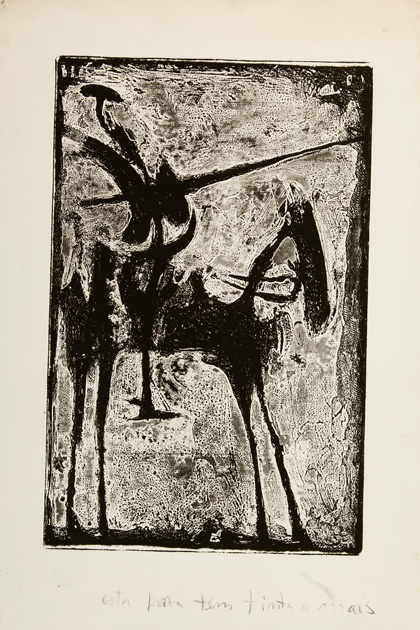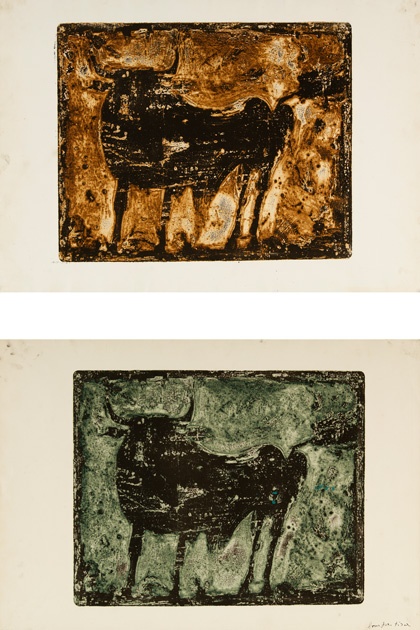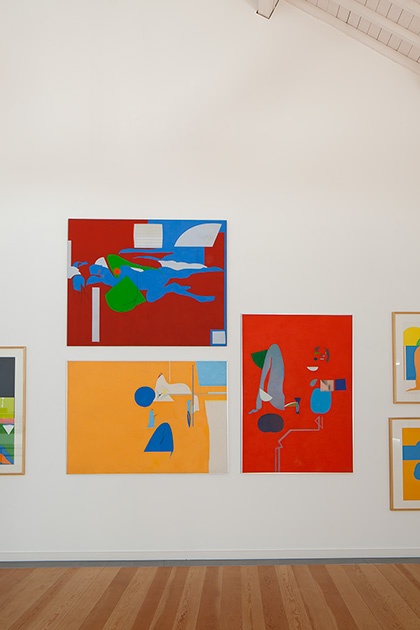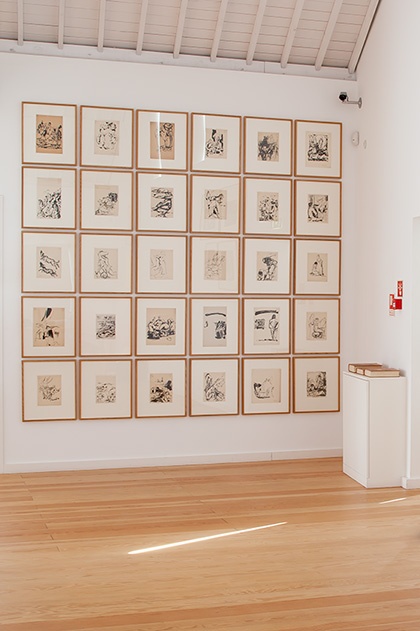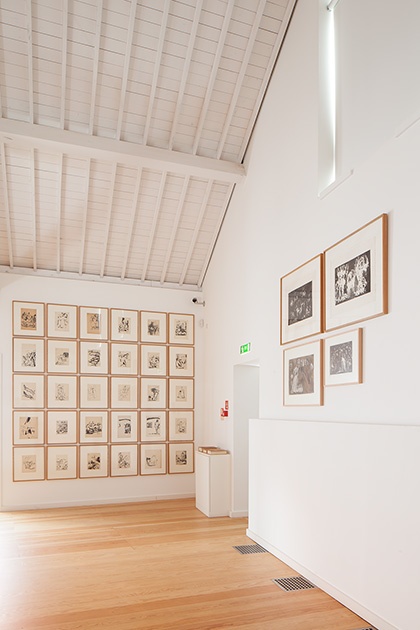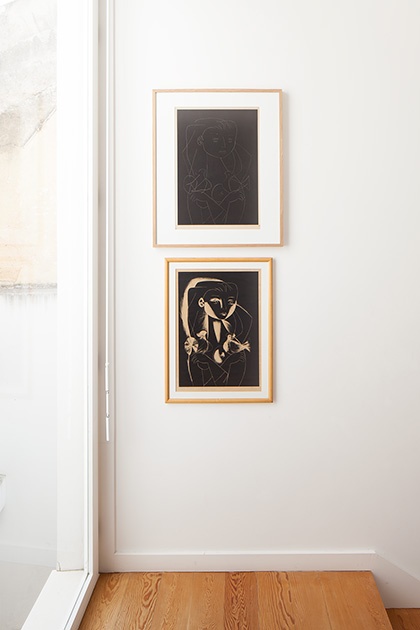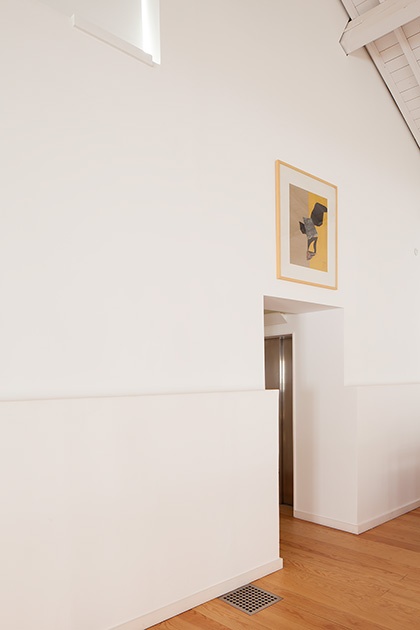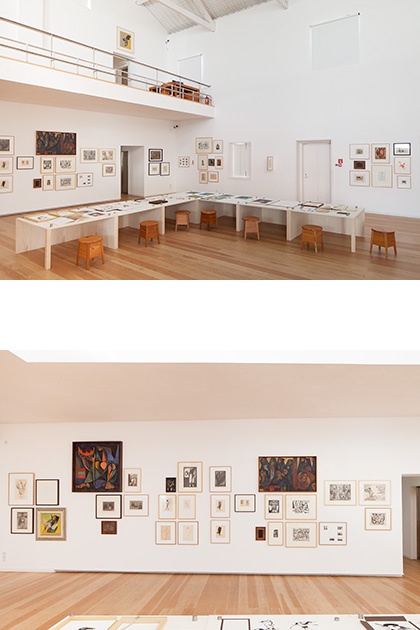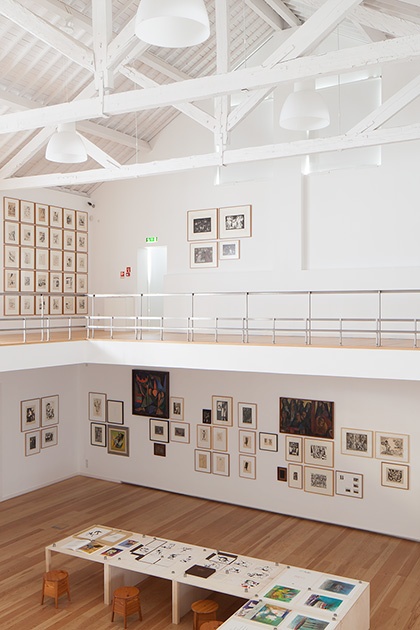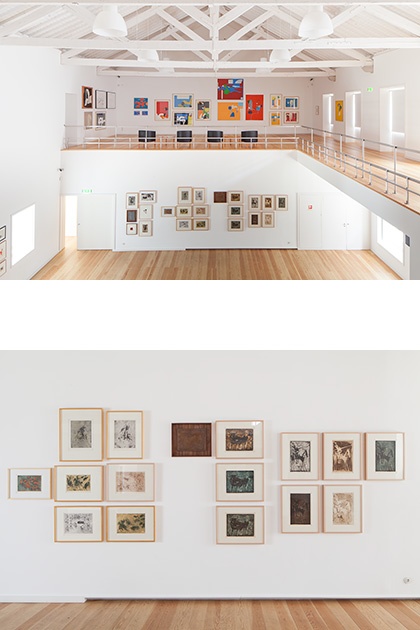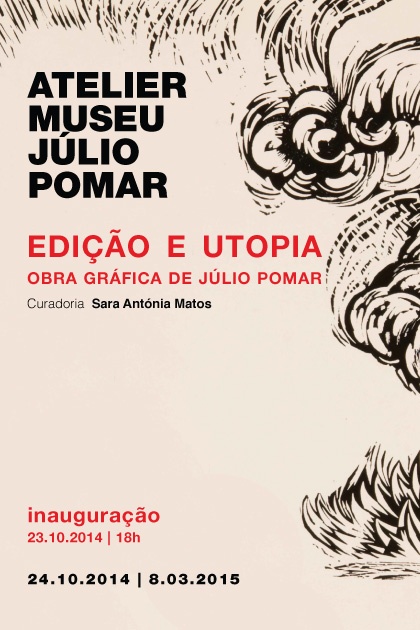
The graphic work of Júlio Pomar
What leads an artist to create editions and multiple copies of a single image? The exhibition ‘Edition and Utopia – The Graphic Work of Júlio Pomar’ raises a series of questions related to the practices of printmaking, screen printing and, lato sensu, ways of reproducing images. What drives the recourse to techniques that enable a multiplication of images? For what purpose?
The printmaking practices, the more or less special editions, and the more or less limited prints bear a kind of contradiction: the wide dissemination and circulation of an image of an artwork, whose singular, unrepeatable nature makes it restricted to a specialised world – a paradox that, in itself, reveals a utopia.
Divided into several sections, the exhibition introduces the viewer to Júlio Pomar’s printmaking production in the 1950s, the drawings/illustrations for Tolstoy’s War and Peace and for Aquilino Ribeiro’s O Romance de Camilo . It also shows some boxes with silkscreen prints, with special attention paid to limited editions, numbered and signed by the artist, and extends to screen printing reproductions, where one finds a series of ‘nude cut-outs’, a technique in which the painter seems, explicitly, to move closer to printmaking methodologies.
In each section of the exhibition – aside from the multiplied or replicated forms on display – paintings, drawings, studies, proofs, metal plates and other supports are presented, allowing an understanding of how artistic media interact with the painter’s thoughts, and providing a sense of the complex circuit involved in Júlio Pomar’s creative process.
